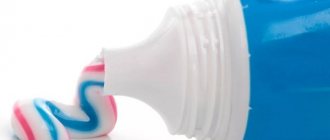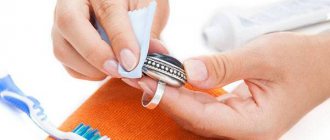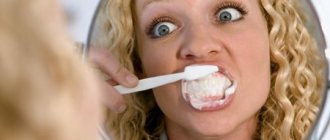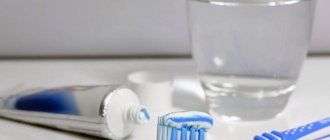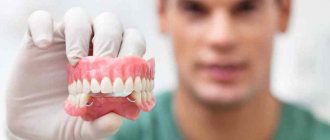Why milk and dairy products are good for teeth
First of all, the positive effect is due to the high content of calcium in them - the main building material of bone tissue. The presence of the milk carbohydrate lactose improves its absorption [1]. In addition, the composition contains substances with an antimicrobial effect. Thus, milk and dairy products:
- promote remineralization of tooth enamel [1];
- suppress harmful microflora of the oral cavity [1];
- create a protective film on the surface of the enamel [2];
- increase the resistance of enamel to acids, thereby reducing the risk of caries [3].
It is important! Dental care rules
What is a healthy and beautiful smile? This is, first of all, the attitude of the person himself to his health and beauty, and only then the work of the dentist. You need to take care of your oral cavity from childhood. How to properly care for your teeth?
Dental care rules
1. Brush your teeth correctly. You need to brush your teeth at least 2 times a day, morning and evening before bed. You can brush your teeth both before and after meals. If you brush your teeth before meals, do it 15 minutes before meals so as not to spoil the taste with toothpaste, and after breakfast, rinse your mouth with water. You can add half a teaspoon of baking soda to the water or replace the water with mouthwash.
If you are a fan of brushing your teeth after eating, this is also great, because this way you will be sure that food debris will be removed and will save you from the need to rinse your mouth additionally. There is no right or wrong way. Choose the one that suits you. It doesn't matter when you brush your teeth, it matters HOW YOU do it.
2. Use dental floss. There is a huge selection of dental floss: round and flat, super-floss, flavored, fluoride-coated, etc. Of course, you make the choice yourself, but a dentist can help you with this. You need to floss once a day before going to bed, combining it with subsequent brushing of your teeth. The movement of the thread is made only along the axis of the tooth.
3. The right toothbrush. The toothbrush should have artificial bristle fibers. The head of the toothbrush should be approximately 2-2.5 teeth in length. The hardness of the bristles is selected by the dentist. If you don’t know which brush to choose, it’s better to take a medium hard one.
How much milk and dairy products should you consume daily?
Scientists have calculated how the daily need for calcium varies depending on age:
- 400 – 1200 mg for children depending on age;
- 1,000 mg for adults 18–59 years;
- 1,200 mg for people over 60 years of age;
- 1,300 mg for pregnant women and 1,400 mg for nursing mothers [4].
“Based on a normal diet, the average adult has a calcium deficiency of about 500 mg.”
Kuzmina E.M., M.D., WHO expert in dentistry, head. Department of Prevention of Dental Diseases of Moscow State Medical University [3]
In addition, the diet requires components that help absorb calcium. Two of them (phosphorus and magnesium) must be supplied in certain proportions: both their deficiency and excess play a negative role [1].
- Daily intake of vitamin D: 400 IU for children under 4 years of age, 600 IU for children, adolescents and people under 70 years of age, 800 IU for people over 70 years of age.
- The recommended ratio of calcium and magnesium is 1:0.5.
- The recommended ratio of calcium and phosphorus is 1:1.5–2;
- The required amount of protein for calcium absorption is 1.2–1.6 g per 1 kg of body weight [4].
Of all the listed excipients, only vitamin D is missing from milk and dairy products; all the others are contained in fairly significant quantities.
Given these data, all that remains is to check the table and find out how much of a particular dairy product is needed to replenish the daily requirement.
| Milk product | Contents per 100 g of product | |||
| Calcium, mg | Magnesium, mg | Phosphorus, mg | Protein, g | |
| Milk | 143 | 13 | 82 | 4,1 |
| Yogurt | 152 | 15 | 119 | 4,4 |
| Cottage cheese | 91 | 7 | 163 | 11,8 |
| Sour cream | 104 | 10 | 95 | 2,9 |
| Mozzarella cheese | 505 | 20 | 354 | 22,2 |
| Edam cheese | 731 | 30 | 536 | 25,0 |
| Gouda cheese | 700 | 29 | 546 | 24,9 |
| Brie cheese | 184 | 20 | 188 | 20,7 [5] |
What is lactase deficiency
This phenomenon is associated with a lack of enzymes responsible for processing lactose.
A lack of necessary enzymes occurs:
- congenital;
- acquired.
When a child is born with lactase deficiency, the cause is genetic disorders. In 90% of cases, the problem with lactose processing is passed down from generation to generation.
How to choose healthy dairy products
To ensure that purchased dairy products only bring benefits, you need to follow a few simple rules.
- Study the information on the packaging: check the expiration date and compliance of the stated storage conditions with those provided by the retail outlet.
- Do not buy milk and dairy products secondhand from random sellers without appropriate declarations and certificates of conformity.
- In case of doubt about the quality of the goods, supporting documents should be required - they must be provided to the buyer.
- When choosing sour cream, you need to pay attention to the name so as not to buy a sour cream product based on vegetable fats.
- The previous advice also applies to cheese: it is necessary to distinguish between the names “cheese” and “cheese product”. In the second case, a substitute is used instead of part of the milk fat.
- You should choose yoghurts with a minimum shelf life and the shortest composition [6].
Consume high-quality dairy products in the required quantities, and your teeth will remain strong and healthy throughout your life.
Why can diarrhea occur after drinking milk?
Dairy products occupy an important place in human nutrition. For children in the first year of life, this is the basic foundation. What to do if diarrhea appears after drinking milk? Why does this happen and what needs to be done to avoid this problem again?
The causes of diarrhea after milk can be the following:
- lactose deficiency;
- allergy;
- diseases of internal organs;
- incorrect combination of products;
- an infection that entered the body along with low-quality milk, it could be E. coli, salmonella.
A doctor can correctly identify the cause of diarrhea after conducting tests. If diarrhea does not go away for more than 4 hours, or the temperature rises, you should seek help from a specialist immediately.
Is it possible to cure pathology?
What to do if the diagnosis of lactase deficiency is confirmed by a doctor? How to treat, what to do so that the unpleasant sensations do not recur?
For lactase deficiency, elimination diet therapy is prescribed. In other words, it is necessary to limit the consumption of products containing lactose.
With alactasia, when the body is unable to process foods containing lactose, a special diet is prescribed for life. It is necessary to exclude products with lactose.
Preparations are produced that supply the necessary enzymes.
The pharmaceutical industry produces the following drugs:
- medicines with the necessary enzyme, for example, Laktrazar, they are taken simultaneously with products containing lactose;
- preparations with lactose, for example, Lactaid, they are added to milk.
Using these drugs, you can consume foods containing lactose without unpleasant consequences.
How to feed a child with lactase deficiency
The biggest problem for parents is diarrhea after milk in newborns. In this case, a diagnosis of congenital lactase deficiency is made. The child's body is not able to process lactose.
It is necessary to consult a pediatrician who will determine the diagnosis and help you choose nutritional formulas suitable for such babies. Nowadays it’s easy to find such options in specialized stores. Such nutrition can be found in the series “Granny’s Basket”, “Nutrilon” and others. Parents of such children should choose products marked “BL”, “FL”.
If the child's body is able to process small amounts of lactose, then low-lactase mixtures are suitable.
Diarrhea after milk appears for various reasons. This is due to diseases, allergic reactions, lactase deficiency, and poor product quality. Depending on the cause, different methods of diagnosis and treatment are used.
Recommended video:
How to clean with milk correctly
To achieve results, at least half an hour must pass after eating. It is better to use a soft or medium-hard brush so as not to injure the gums and the inner surface of the cheeks. Do not press hard, act carefully, avoid sudden movements.
The procedure can be performed 2-3 times a week:
- Pour some milk into a clean, dry jar with a tight-fitting lid.
- Rinse your mouth with warm water to remove food particles and moisten the surface.
- Wet the bristles of a toothbrush and dip them in milk powder.
- Brush your teeth for 2-4 minutes.
- Rinse several times with water.
Small particles of powdered milk really whitened my teeth, the inflammation of the gums that tormented me decreased, caries and tartar bother me less.
A cheap simple cleaning takes less than 5 minutes, and the result is not inferior to expensive dental procedures.
What's in a Nature's Medicine Cabinet: Common Foods, Herbs and Spices for Antibiotics, Painkillers and Digestive Aids
Reasons why it is better to drink chicory instead of coffee.
How does an elliptical trainer differ from a treadmill and an exercise bike, and why should you buy one for your home?
Source: aktsport.ru
Diagnostics
If symptoms appear regularly, it is recommended to consult a specialist. Modern medicine offers a number of ways to diagnose this problem.
Examination options to determine lactase deficiency:
- genetic blood test;
- hydrogen breath test;
- urine and blood tests to determine galactose;
- lactase load test;
- determination of lactose activity using samples of the small intestinal mucosa.
We recommend watching the video:
It is easy to determine that diarrhea after milk is a symptom of enzyme deficiency. On an empty stomach you need to take 50 g of lactose. If the problem is related to enzyme deficiency, then the symptoms will be characteristic.
Everything is quite simple: if you drink milk, symptoms appear within 30 minutes, and after 3 hours all discomfort will pass.
Pros and cons of home teeth whitening
When compared to a professional procedure, home teeth whitening is cheaper and more accessible.
At the same time, folk remedies are ineffective and do not affect the color of the enamel, but only eliminate soft plaque. The result does not last long and there is a high risk of damaging the enamel.
In addition, teeth whitening according to traditional recipes can cause a number of side effects:
- Burns to the oral mucosa due to the use of hydrogen peroxide.
- Irritation of soft tissues located in the cervical part of the gums.
- Burning and tingling sensation in the gums.
- Increased sensitivity of teeth, reaction to cold and hot.
To avoid such effects, it is not recommended to whiten teeth at home without consulting a dentist.
How to replace milk if you are lactose intolerant
Limiting the consumption of dairy products can lead to calcium deficiency. This is dangerous due to the deterioration of bone tissue. There is a risk of developing osteoporosis and pathological fractures.
It is necessary to increase your calcium intake by eating other foods.
We recommend watching the video:
It is recommended to use the following products in your diet:
- white cabbage, broccoli;
- salads
- spinach;
- turnip;
- eggs;
- chocolate milk.
Recently, lactose-free milk can be found on store shelves.
Cheeses supply the body with calcium. It is necessary to pay attention to varieties that contain little lactose, for example, mozzarella, cheddar and others.
Most people who are lactose intolerant can handle small amounts of dairy products. It is recommended to use them little by little.
How to deal with diarrhea after milk
What to do if diarrhea after milk has become a regular occurrence? It is necessary to undergo diagnostics to determine the causes of the problem.
If an allergy is diagnosed, dairy products must be excluded.
If a specialist confirms lactase deficiency, then it is necessary to change the diet. At the same time, reduce the amount or avoid eating foods containing lactose at all.
Sometimes diarrhea becomes a symptom of other diseases. The underlying cause must be treated.
Some medicines contain lactose. It belongs to the group of probiotics. Therefore, during treatment, you should warn your doctor about the problem with the body’s processing of lactose. The specialist will select an alternative drug.



